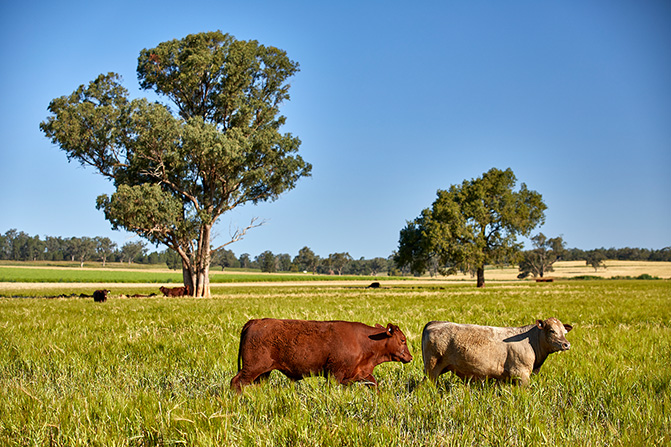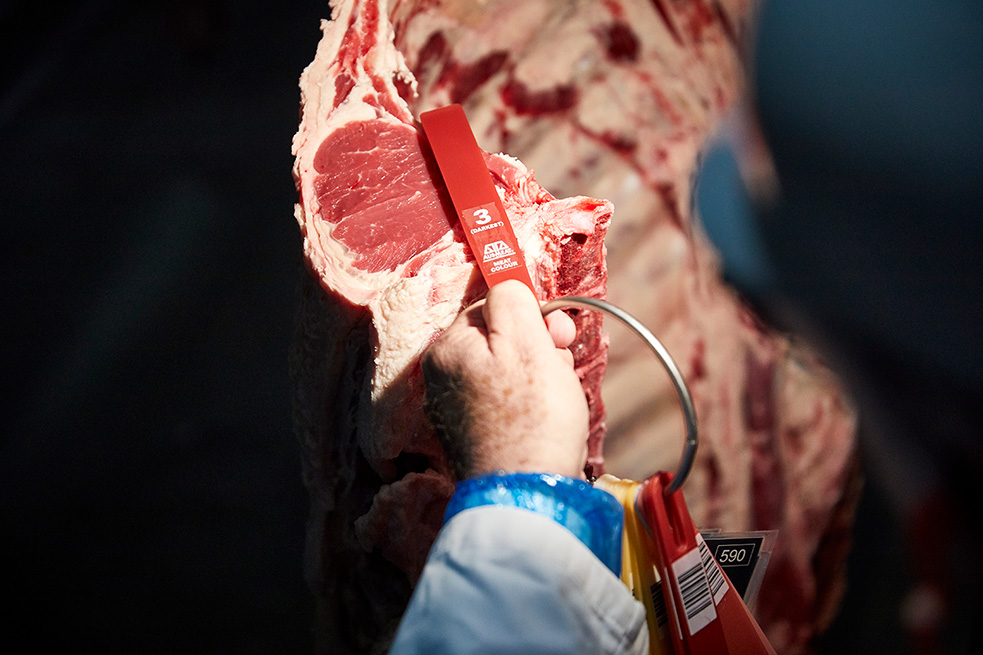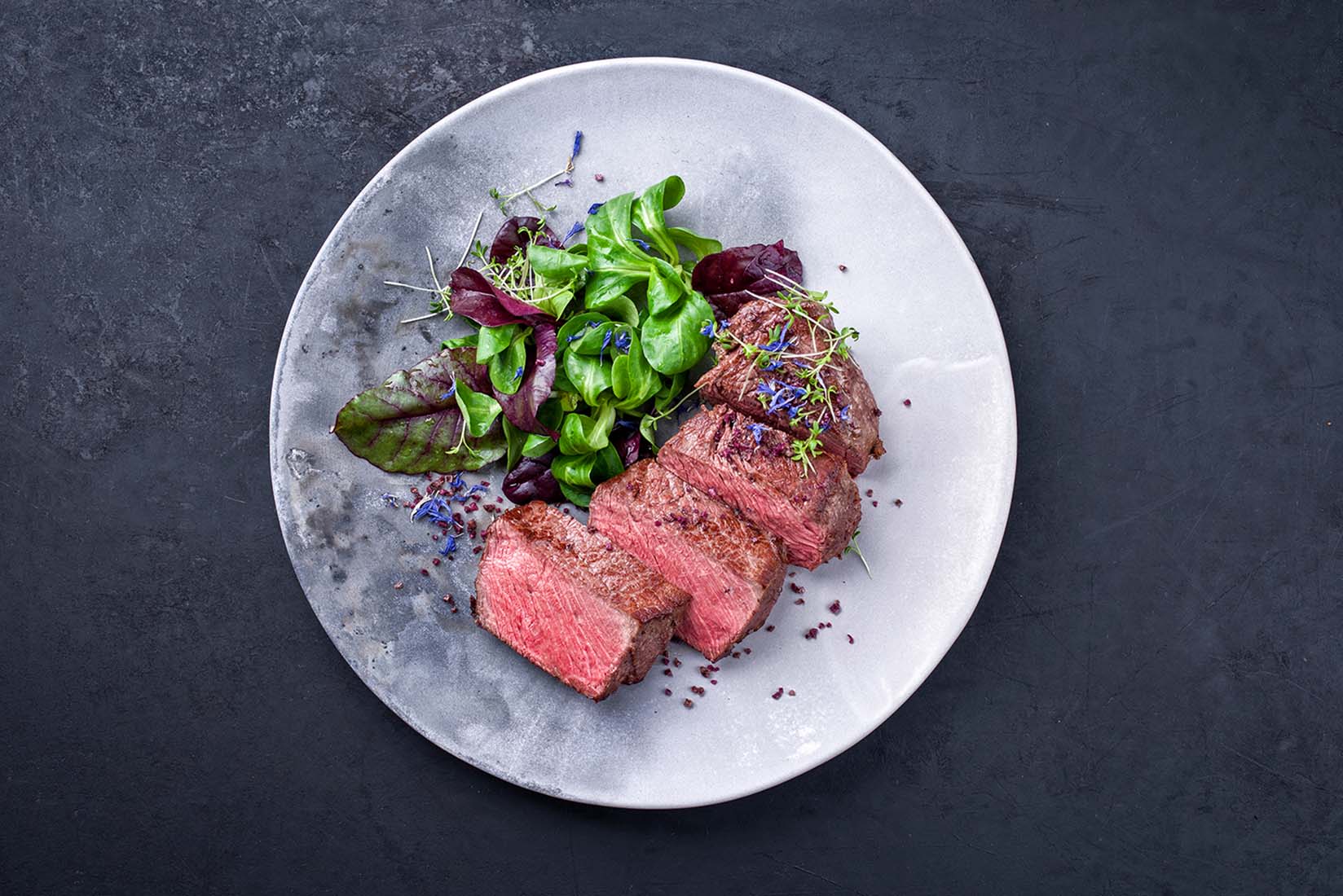The ultimate guide to Australian Wagyu What Makes Australian Wagyu A Class Of Its Own?
From different grades to learning how to pick and cook Wagyu, all your burning questions on Australian Wagyu answered here.
Melt-in-your-mouth texture, incredible juiciness, and a sweet umami flavour. These are some words that are often used to describe Wagyu. But what really sets the world’s most prized cattle apart from the herd is its intense and immaculate marbling - yes, those flecks of fat found between the muscle fibre bundles - which yields ultra tender beef and a rich flavour.
You’d be forgiven for being confused with the different meat grading systems, countries of origin and cooking methods for Wagyu. Here, Valeska, Regional Manager, Southeast Asia for Meat & Livestock Australia, Jordan Keao, Chef de Cuisine of Butcher’s Block, and Isaac Tan, Executive Chef of Commonwealth Concepts shed light into the world of Australian Wagyu and how you can prepare this prized cut of beef to pamper your palate.

Tracing The Lineage Of Wagyu
Wagyu literally translates to “Japanese Cattle” and specifically refers to a breed of cattle originating from Japan that is genetically predisposed to intense marbling. Fullblood Wagyu production and crossbreeding programmes outside of Japan were made possible when in the late 1980s through to the 1990s, around 221 Japanese Black Wagyu cattle were shipped live to Australia and America.
Embryos were collected from these cattle to ensure the longevity of their bloodlines. Today, cattle can only be registered as a Fullblood Wagyu if all forebears originate from Japan and there is no evidence of outcrossing to other breeds. At the same time, farmers began to crossbreed Wagyu by having Fullblood Wagyu sire with dams from other breeds. This allows large numbers of cattle with Wagyu genetic content to be bred within a single generation.
Australia now has the largest Wagyu herd outside Japan. Blessed with wide open spaces, a natural environment and unique climate, Australian Wagyu cattle are raised on pasture and this less stressful life has a positive impact on their meat. To ensure consistency in quality, the cattle then spend a considerable amount of time in high-tech feedlots.
Australian Wagyu delivers an extremely rich flavour due to its softer fat composition, higher proportion of healthier unsaturated fats, finer meat texture and higher ribeye yield. Not only is the marbling intense, but so is the eating experience.

How Australian Wagyu Is Graded
In Australia, a marble score is a component of the AUS-MEAT beef quality grading system. “Marbling score is assessed visually by an AUS-MEAT qualified grader during carcass grading using the scoring range from 0 to 9. For beef that exceeds this quality, it would be graded as 9+” explains Valeska, Regional Manager, Southeast Asia for Meat & Livestock Australia. “In addition to the quantity, the distribution and texture of visible fat flecks within the ribeye are considered during marbling score assessment,” she adds.
“The AUS-MEAT grading system has been in place for over 20 years and was developed through extensive research. With a single grading system and standard that everyone adheres to in all of Australia, there is consistency around how each beef carcass is graded. This ensures that buyers and consumers can get consistent quality and great eating experience every single time,” she says.

How To Pick And Prepare Your Australian Wagyu
Executive Chef Isaac Tan of Commonwealth Concepts, which Kinki Restaurant and Bar is part of, likes to pair Australian Wagyu with foie gras “as it has a good meat to fat ratio, and it compliments very well with the foie gras". Over at Butcher’s Block, an avant-garde wood-fire restaurant, Chef de Cuisine Jordan Keao serves Australian Striploin and Tenderloin Wagyu which are highly popular with their guests. “They love the balance between the flavour of beef and the marbling quality being just perfect. It is not overly fatty and has the beautiful flavour of beef, which our guests are looking for. Australian Wagyu will melt in your mouth and has the benefit of having a lovely natural flavour. Both are equally important for me when I am sourcing the perfect cut and farm to work with,” he says.
Take it from the chefs and try these tips when shopping for Australian Wagyu. Isaac recommends consumers “choose a firm piece of steak and look out for its marbling in the form of intramuscular fat which appears as fine flecks within the muscle. “The presence of marbling has a very positive effect on the quality of beef in terms of tenderness when cooked,” he adds.
As a guide, Jordan advises one to “look for a minimum of 7+ marbling all the way up to 9+, which is the highest and best marbling to cook with”. Valeska shares that “the higher the marbling score, the more delicate and buttery the flavours are. In which case, it’ll be best to cook these with fast-cook methods”. Check out this cut-by-cook recipe guide for more information.
Australian Wagyu can be perceived as an intimidating ingredient to work with but it’s hard to go wrong with it, “Just make sure not trim off too much fat as it will render itself off when cooked,” assures Isaac. Jordan cautions against “seasoning your meat until after it is done cooking. This will allow you to taste the flavour of the beef and not just the salt or marinade”.
If you are still finding your way around the kitchen, Isaac recommends a quick stir-fry “so you do not have to worry about its doneness”. Jordan adds that “cooking on a BBQ over wood fire is the best starting point and easy for everyone to do. All you need is a thermometer and a few guidelines to follow. Make sure the beef is dry when you start, keep moving the steak around the grill to always keep it on a hot surface, and rest the steak once it is hot and starts to slowly caramelise. When you touch the steak and it has cooled down, return it to the grill and continue to move it around to cook,”

